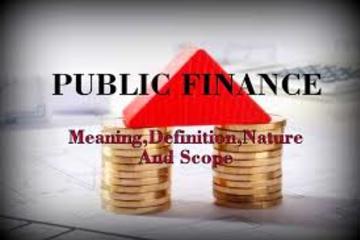We found 38 results that contain "ics"
Posted on: #iteachmsu
![post image]()
PEDAGOGICAL DESIGN
Article created by Group Admin
Contrary to popular belief, Lorem Ipsum is not simply random text. It has roots in a piece of classical Latin literature from 45 BC, making it over 2000 years old. Richard McClintock, a Latin professor at Hampden-Sydney College in Virginia, looked up one of the more obscure Latin words, consectetur, from a Lorem Ipsum passage, and going through the cites of the word in classical literature, discovered the undoubtable source. Lorem Ipsum comes from sections 1.10.32 and 1.10.33 of "de Finibus Bonorum et Malorum" (The Extremes of Good and Evil) by Cicero, written in 45 BC. This book is a treatise on the theory of ethics, very popular during the Renaissance. The first line of Lorem Ipsum, "Lorem ipsum dolor sit amet..", comes from a line in section 1.10.32.
The standard chunk of Lorem Ipsum used since the 1500s is reproduced below for those interested. Sections 1.10.32 and 1.10.33 from "de Finibus Bonorum et Malorum" by Cicero are also reproduced in their exact original form, accompanied by English versions from the 1914 translation by H. Rackham.
The standard chunk of Lorem Ipsum used since the 1500s is reproduced below for those interested. Sections 1.10.32 and 1.10.33 from "de Finibus Bonorum et Malorum" by Cicero are also reproduced in their exact original form, accompanied by English versions from the 1914 translation by H. Rackham.
Posted by:
E1 GA
Posted on: #iteachmsu
![post image]()
Article created by Group Admin
Contrary to popular belief, Lorem Ipsum is not simply random text. ...
Posted by:
PEDAGOGICAL DESIGN
Thursday, May 9, 2019
Posted on: #iteachmsu

An Overview of the Syllabus and its Role at MSU
What a syllabus is
A syllabus is a synecdoche for a course of study—a part of the curricular experience that represents the whole. They are often the very first course texts our students encounter and, accordingly, they frame and preface learning in powerful ways. On one hand, they communicate practical and structural details—where and when a course meets, what to read, and how to contact an instructor. But they also express intellectual and discipline-specific expectations.
As a special genre of educational texts, syllabi have taken various forms and played various roles over many centuries. In the 17th century ‘syllabus’ was synonymous with ‘table’ or ‘index.’ They served as a structural preview for manuscripts or a list of speakers and topics for a lecture series—they were a means of organizing texts, ideas, and experience. Although that core function remains, post-secondary syllabi have expanded significantly in volume and purview over the past forty years.
A syllabus is a synecdoche for a course of study—a part of the curricular experience that represents the whole. They are often the very first course texts our students encounter and, accordingly, they frame and preface learning in powerful ways. On one hand, they communicate practical and structural details—where and when a course meets, what to read, and how to contact an instructor. But they also express intellectual and discipline-specific expectations.
As a special genre of educational texts, syllabi have taken various forms and played various roles over many centuries. In the 17th century ‘syllabus’ was synonymous with ‘table’ or ‘index.’ They served as a structural preview for manuscripts or a list of speakers and topics for a lecture series—they were a means of organizing texts, ideas, and experience. Although that core function remains, post-secondary syllabi have expanded significantly in volume and purview over the past forty years.
Posted by:
Super Admin

Posted on: #iteachmsu

Develop and actively communicate your course-level generative AI policy
1. Consider how AI technology might compel you to revise your course assignments, quizzes, and tests to avoid encouraging unethical or dishonest use of generative AI. 2. Develop and integrate a generative AI policy throughout the course resources:
Provide clear definitions, expectations, and repercussions of what will happen if students violate the policy.
Explain the standards of academic integrity in the course, especially as related to use of AI technologies, and review the Integrity of Scholarship and Grades Policy.
Be clear about what types of AI are acceptable and what versions of the technology students can use or not use.
Put this policy into D2L and any assignment instructions consistently.
3. Discuss these expectations when talking about course policies at the beginning of the course and remind students about them as you discuss course assignments:
Take time to explain to students the pros and cons of generative AI technologies relative to your course.
Explain the development of your policy and make clear the values, ethics, and philosophies underpinning its development.
Explain the repercussions of not following the course policy and submit an Academic Dishonesty Report if needed.
4. If you want to integrate AI in the classroom as an allowed or required resource:
Consult with MSU IT guidance about recommendations for use and adoption of generative AI technology, including guidelines for keeping you and your data safe.
Determine if MSU already has access to the tools you desire for free, and if not available through MSU, consider the cost and availability of the resources you will allow or require, and go through MSU's procurement process.
If you want to require students to use an AI technology that comes with a cost, put the resource into the scheduling system as you would a textbook, so students know that is an anticipated cost to them.
Provide clear definitions, expectations, and repercussions of what will happen if students violate the policy.
Explain the standards of academic integrity in the course, especially as related to use of AI technologies, and review the Integrity of Scholarship and Grades Policy.
Be clear about what types of AI are acceptable and what versions of the technology students can use or not use.
Put this policy into D2L and any assignment instructions consistently.
3. Discuss these expectations when talking about course policies at the beginning of the course and remind students about them as you discuss course assignments:
Take time to explain to students the pros and cons of generative AI technologies relative to your course.
Explain the development of your policy and make clear the values, ethics, and philosophies underpinning its development.
Explain the repercussions of not following the course policy and submit an Academic Dishonesty Report if needed.
4. If you want to integrate AI in the classroom as an allowed or required resource:
Consult with MSU IT guidance about recommendations for use and adoption of generative AI technology, including guidelines for keeping you and your data safe.
Determine if MSU already has access to the tools you desire for free, and if not available through MSU, consider the cost and availability of the resources you will allow or require, and go through MSU's procurement process.
If you want to require students to use an AI technology that comes with a cost, put the resource into the scheduling system as you would a textbook, so students know that is an anticipated cost to them.
Authored by:
Super admin user

Posted on: #iteachmsu

PEDAGOGICAL DESIGN
Evolution of Organizational Behavior
REF: https://courses.lumenlearning.com/wm-organizationalbehavior/chapter/what-is-organizational-behavior
In a nutshell, organizational behavior is the study of how human behavior affects an organization. Organizational behavior aims to learn how an organization operates through the behaviors of its members. Instead of taking a strictly numerical approach to determine an organization’s operations, it takes a more psychological approach. By understanding people, you can better understand an organization
The academic study of organizational behavior can be dated back to Taylor’s scientific theory . However, certain components of organizational behavior can date back even further. In this section we will discuss how organizational behavior developed into a field of its own.
Looking back thousands of years we can find components of organizational behavior. Famous philosophers like Plato and Aristotle discussed key components of today’s organizations including the importance of leadership and clear communication. While these seem like very basic and broad concepts today, at the time they were innovative ideas and helped to lay the foundation for organizational behavior.
If organizational behavior were a simple topic, this course would be short and sweet. We could simply say that organizational behavior is how people and groups act within an organization. But it’s not so simple!
When organizational behavior grew into an academic study with the rise of the Industrial Revolution, it began to complicate what could appear to be simple topics. People began asking a lot of questions and started critiquing how organizations operated. Like many academic ventures, people began to deep dive into how behavior plays a role in organizations and why changes in behavior alter the way organizations operate. Along the way, organizational behavior has grown to incorporate components of management, psychology, leadership, personality traits, motivation, etc.
Organizational behavior has grown into its own niche within a wide variety of other genres. This is exciting because it allows us to really investigate each and every aspect of behavior within an organization! Today, organizational behavior is recognized as an essential component of an organization. Scholars and businesses alike recognize its importance and continue to help it adapt to current issues and new findings.
In a nutshell, organizational behavior is the study of how human behavior affects an organization. Organizational behavior aims to learn how an organization operates through the behaviors of its members. Instead of taking a strictly numerical approach to determine an organization’s operations, it takes a more psychological approach. By understanding people, you can better understand an organization
The academic study of organizational behavior can be dated back to Taylor’s scientific theory . However, certain components of organizational behavior can date back even further. In this section we will discuss how organizational behavior developed into a field of its own.
Looking back thousands of years we can find components of organizational behavior. Famous philosophers like Plato and Aristotle discussed key components of today’s organizations including the importance of leadership and clear communication. While these seem like very basic and broad concepts today, at the time they were innovative ideas and helped to lay the foundation for organizational behavior.
If organizational behavior were a simple topic, this course would be short and sweet. We could simply say that organizational behavior is how people and groups act within an organization. But it’s not so simple!
When organizational behavior grew into an academic study with the rise of the Industrial Revolution, it began to complicate what could appear to be simple topics. People began asking a lot of questions and started critiquing how organizations operated. Like many academic ventures, people began to deep dive into how behavior plays a role in organizations and why changes in behavior alter the way organizations operate. Along the way, organizational behavior has grown to incorporate components of management, psychology, leadership, personality traits, motivation, etc.
Organizational behavior has grown into its own niche within a wide variety of other genres. This is exciting because it allows us to really investigate each and every aspect of behavior within an organization! Today, organizational behavior is recognized as an essential component of an organization. Scholars and businesses alike recognize its importance and continue to help it adapt to current issues and new findings.
Authored by:
Sands

Posted on: #iteachmsu


Evolution of Organizational Behavior
REF: https://courses.lumenlearning.com/wm-organizationalbehavior/ch...
Authored by:
PEDAGOGICAL DESIGN
Tuesday, Dec 29, 2020
Posted on: #iteachmsu

ASSESSING LEARNING
Disease Control and Prevention study
ADHD is one of the most commonly diagnosed conditions of children (Centers for DiseaseControl and Prevention, 2015).
In a 2016 Centers for Disease Control and Prevention study, scientists found that 6.1 million children aged 2-17 years living in the U.S. had been diagnosed with attention-deficit/hyperactivity disorder (ADHD), which is similar to previous en
Ages 6-11: Approximately 2.4 million children
Ages 12-17: Approximately 3.3 million children
The diagnostic term attention deficit/hyperactivity disorder (ADHD) refers to individuals who display patterns of inattention, impulsivity, and overactive behavior that interfere with daily functioning (American Psychiatric Association [APA], 2013).
The Diagnostic and Statistical Manual (DSM) V (APA, 2013) criteria for diagnosing ADHD listthree types of ADHD and the accompanying characteristics
Ref :
In a 2016 Centers for Disease Control and Prevention study, scientists found that 6.1 million children aged 2-17 years living in the U.S. had been diagnosed with attention-deficit/hyperactivity disorder (ADHD), which is similar to previous en
Ages 6-11: Approximately 2.4 million children
Ages 12-17: Approximately 3.3 million children
The diagnostic term attention deficit/hyperactivity disorder (ADHD) refers to individuals who display patterns of inattention, impulsivity, and overactive behavior that interfere with daily functioning (American Psychiatric Association [APA], 2013).
The Diagnostic and Statistical Manual (DSM) V (APA, 2013) criteria for diagnosing ADHD listthree types of ADHD and the accompanying characteristics
Ref :
Authored by:
William

Posted on: #iteachmsu


Disease Control and Prevention study
ADHD is one of the most commonly diagnosed conditions of children (...
Authored by:
ASSESSING LEARNING
Wednesday, Dec 23, 2020
Posted on: #iteachmsu

ASSESSING LEARNING
Industrial Revolution 4.0
What better way to start this new century than to go over the pros and cons of the 4th Industrial Revolution. The 4th industrial revolution is a term coined by Professor Klaus Schwab. He is the founder and Executive chairman of the World Economic Forum, so he has some good credentials. He described the 4th industrial revolution as a “current and developing environment in which disruptive technologies and trends such as the Internet of Things, robotics, virtual reality and Artificial Intelligence are changing the way people live and work”. So this is the era of AI and machine learning, genome editing, 3D printing, Internet of Things, augmented reality, autonomous vehicles, and much more. And we’re not talking about the future here. These things are currently affecting our personal and work life and they are ever evolving.
Authored by:
Divya Sawant
Posted on: #iteachmsu

Industrial Revolution 4.0
What better way to start this new century than to go over the pros ...
Authored by:
ASSESSING LEARNING
Friday, Nov 13, 2020
Posted on: #iteachmsu

DISCIPLINARY CONTENT
Industry and Technology Developments
NAIC System.
Changes in industry demand and technological innovations are important factors affecting future occupational employment, as we saw in the previous section. Furthermore, the projected employment published by the BLS is given for detailed industries and occupations. Thus, I describe the industry classification systems used by the BLS and other federal agencies. These systems provide a framework for assigning codes to establishments, allowing for consistent data collection and analyses of economic statistics in industries over time.
Federal statistical agencies used the Standard Industrial Classification (SIC) system in 1939 when it was first published by the former Bureau of the Budget, which is now the Office of Management and Budget (OMB). Like all classification systems, it was updated periodically. However, economic changes, such as the emerging services-oriented economy, increased use of computers, rapidly evolving technology, and globalization, motivated the need to change the industry classification system.
Changes in industry demand and technological innovations are important factors affecting future occupational employment, as we saw in the previous section. Furthermore, the projected employment published by the BLS is given for detailed industries and occupations. Thus, I describe the industry classification systems used by the BLS and other federal agencies. These systems provide a framework for assigning codes to establishments, allowing for consistent data collection and analyses of economic statistics in industries over time.
Federal statistical agencies used the Standard Industrial Classification (SIC) system in 1939 when it was first published by the former Bureau of the Budget, which is now the Office of Management and Budget (OMB). Like all classification systems, it was updated periodically. However, economic changes, such as the emerging services-oriented economy, increased use of computers, rapidly evolving technology, and globalization, motivated the need to change the industry classification system.
Authored by:
Wendy Martinez

Posted on: #iteachmsu


Industry and Technology Developments
NAIC System.
Changes in industry demand and technological innovatio...
Changes in industry demand and technological innovatio...
Authored by:
DISCIPLINARY CONTENT
Friday, Nov 13, 2020
Posted on: #iteachmsu

NAVIGATING CONTEXT
Public finance
Public finance is the study of the role of the government in the economy. It is the branch of economics that assesses the government revenue and government expenditure of the public authorities and the adjustment of one or the other to achieve desirable effects and avoid undesirable ones.
Authored by:
Divya Sawant

Posted on: #iteachmsu


Public finance
Public finance is the study of the role of the government in t...
Authored by:
NAVIGATING CONTEXT
Friday, Dec 4, 2020


